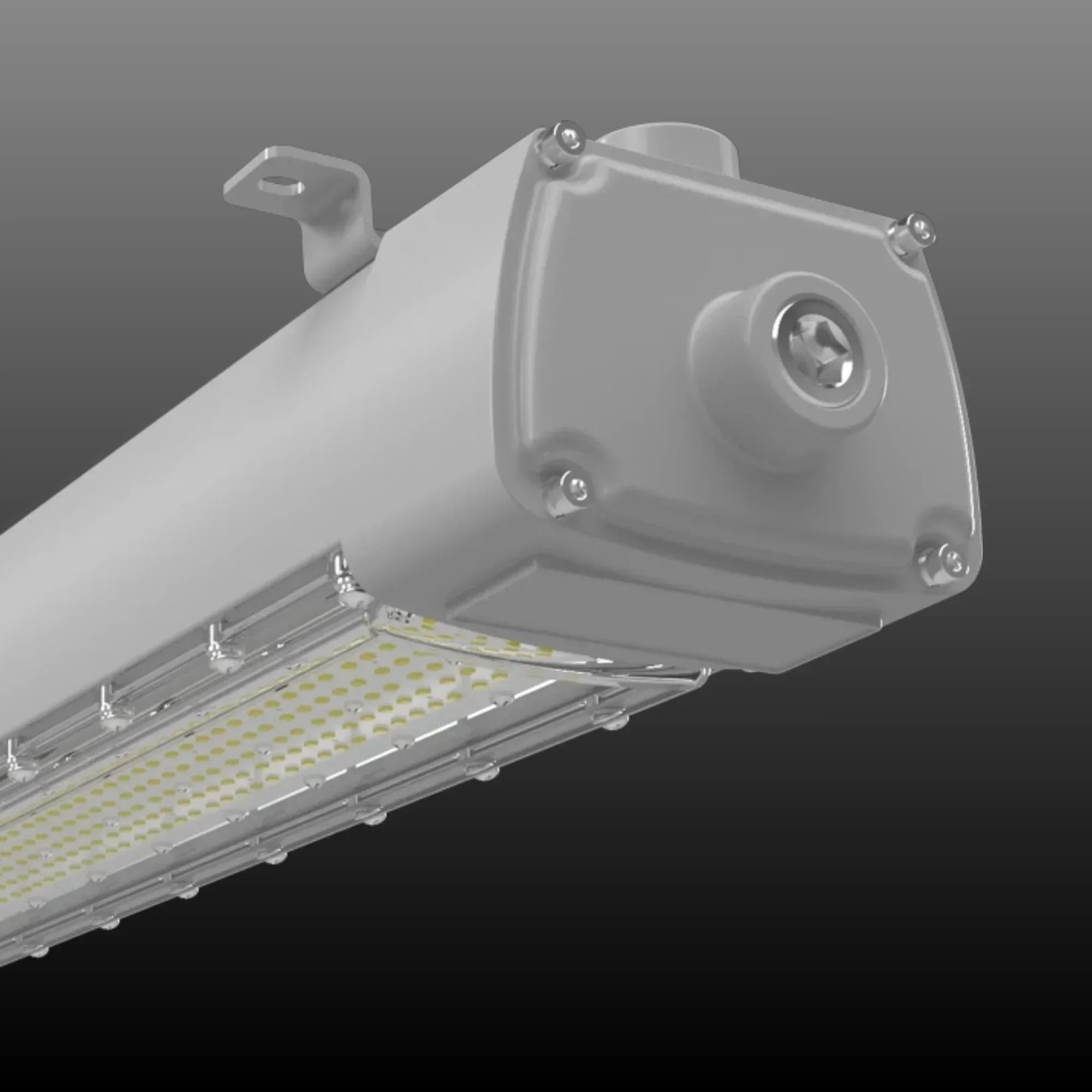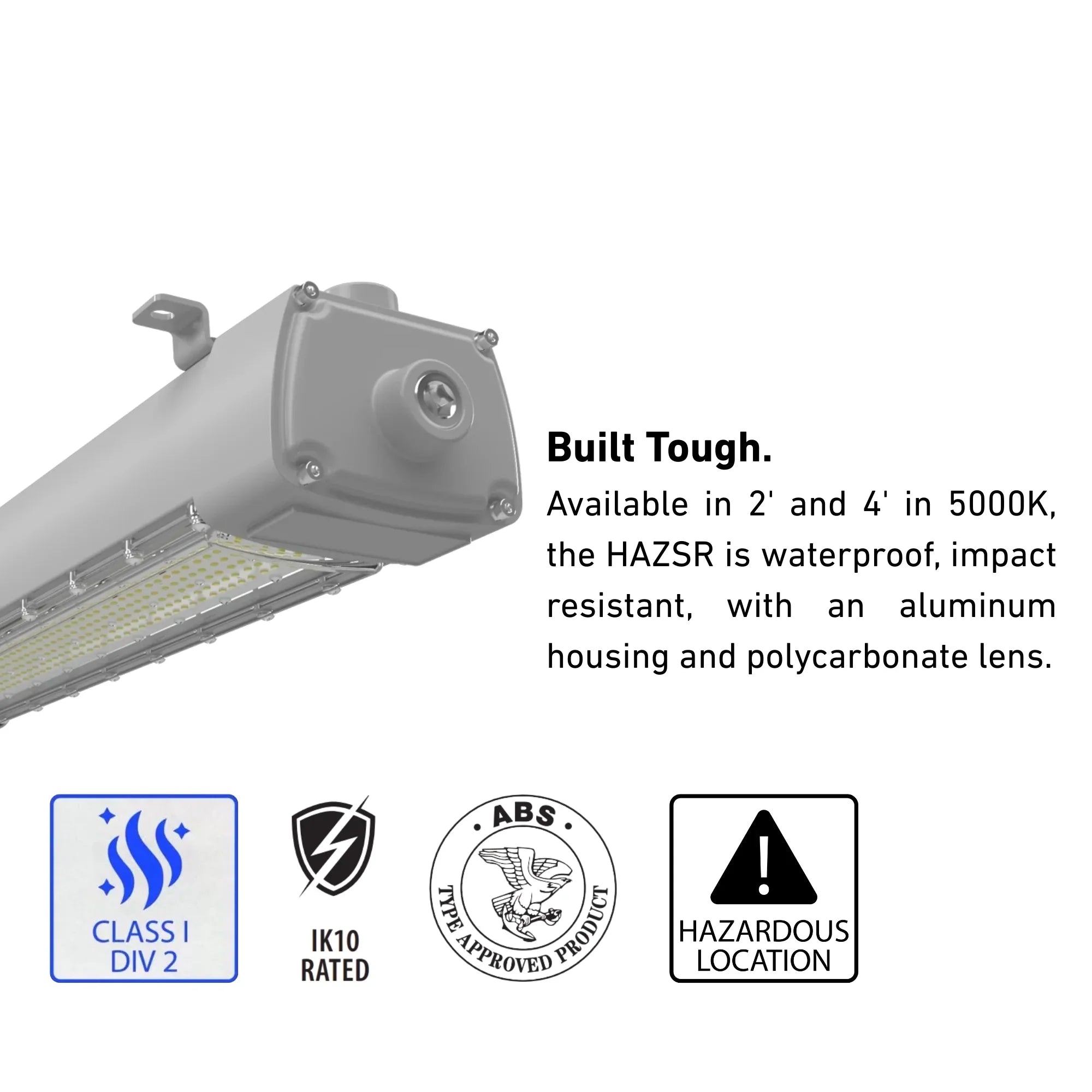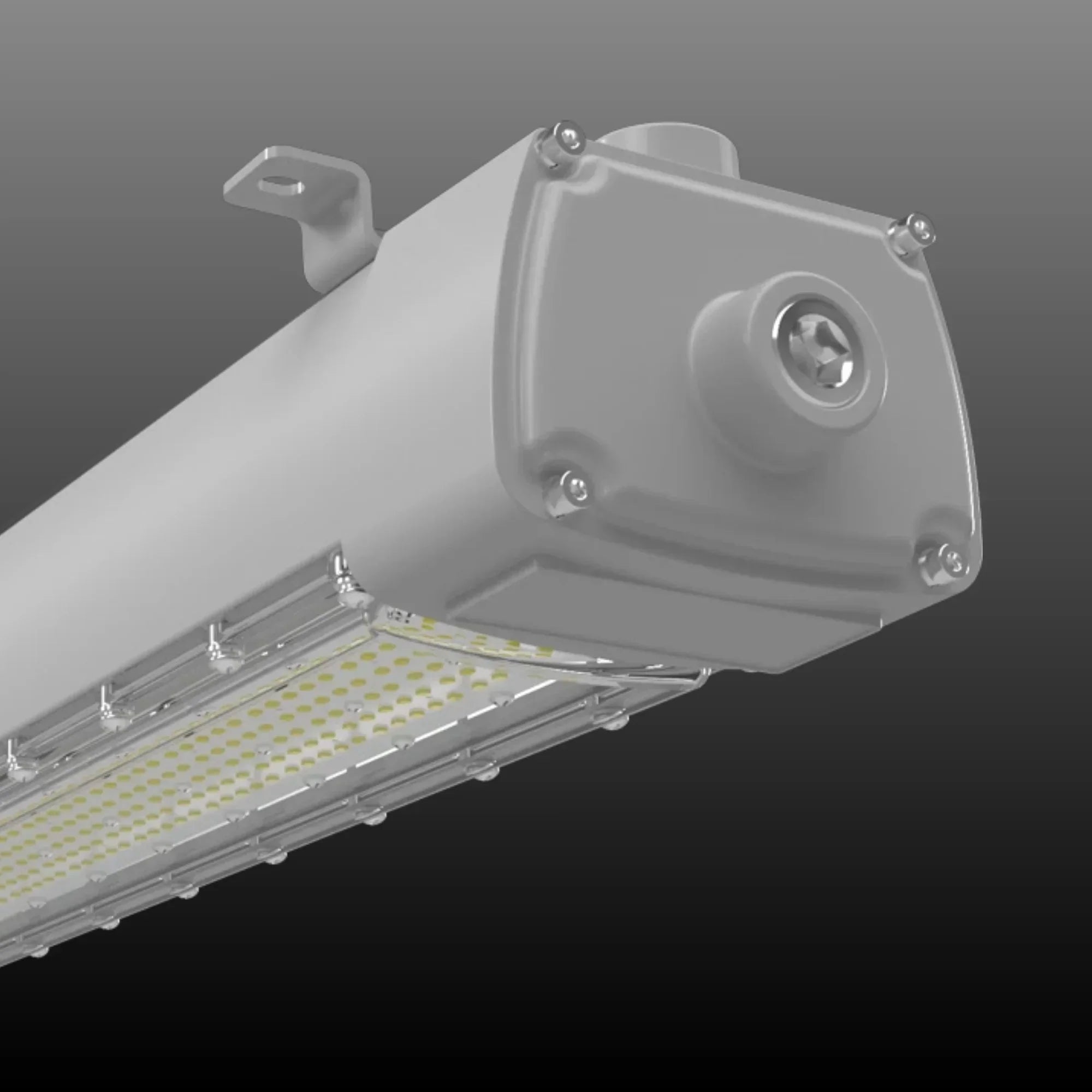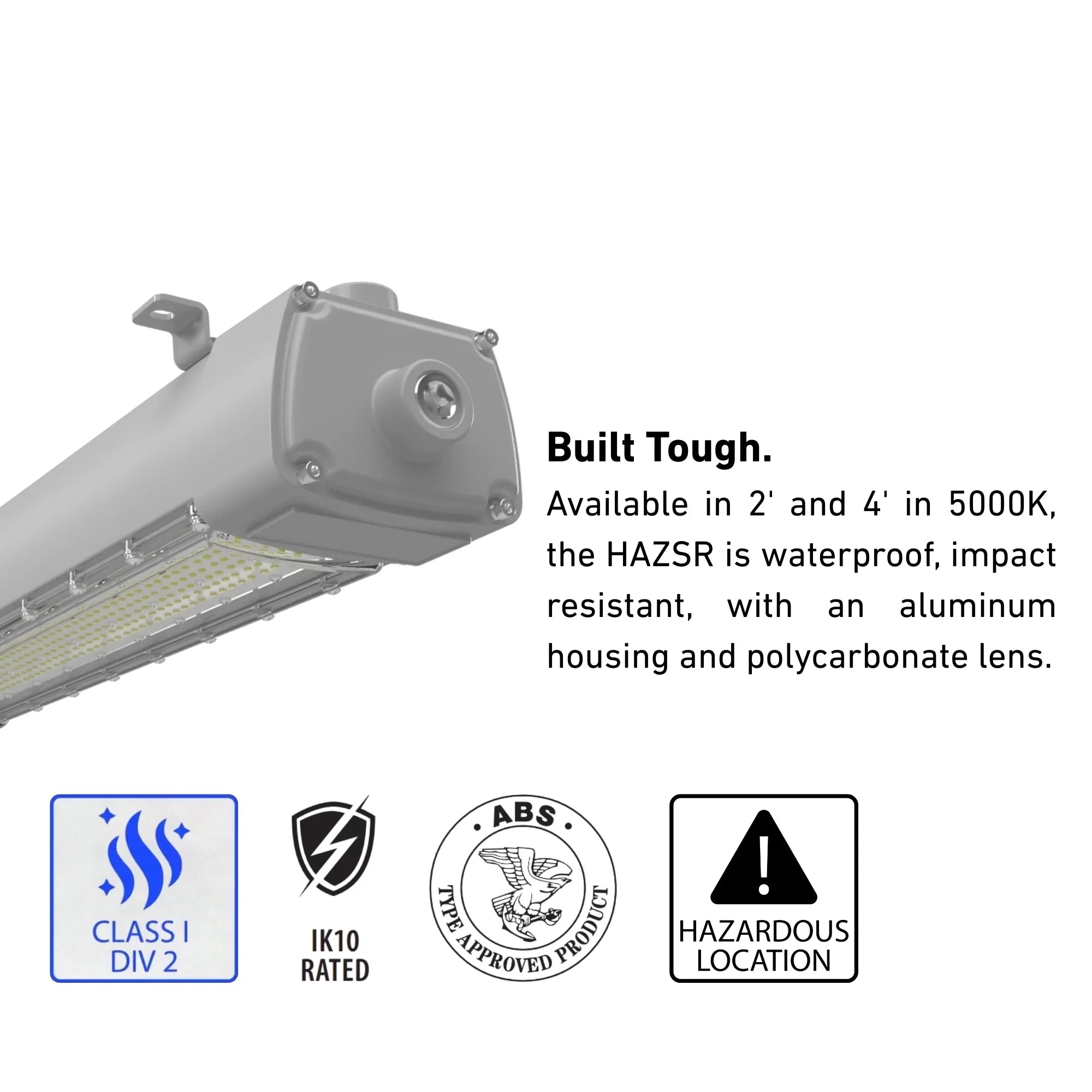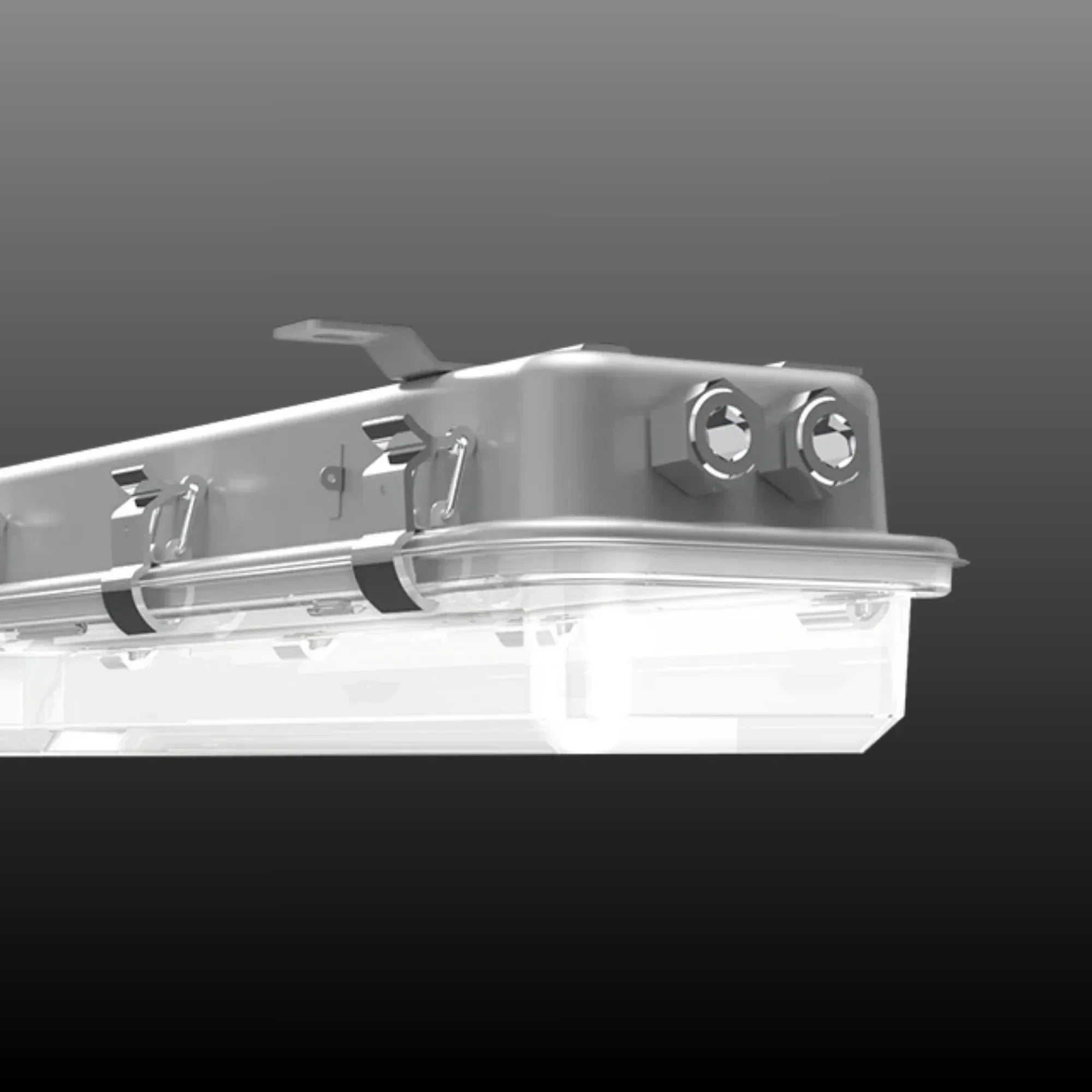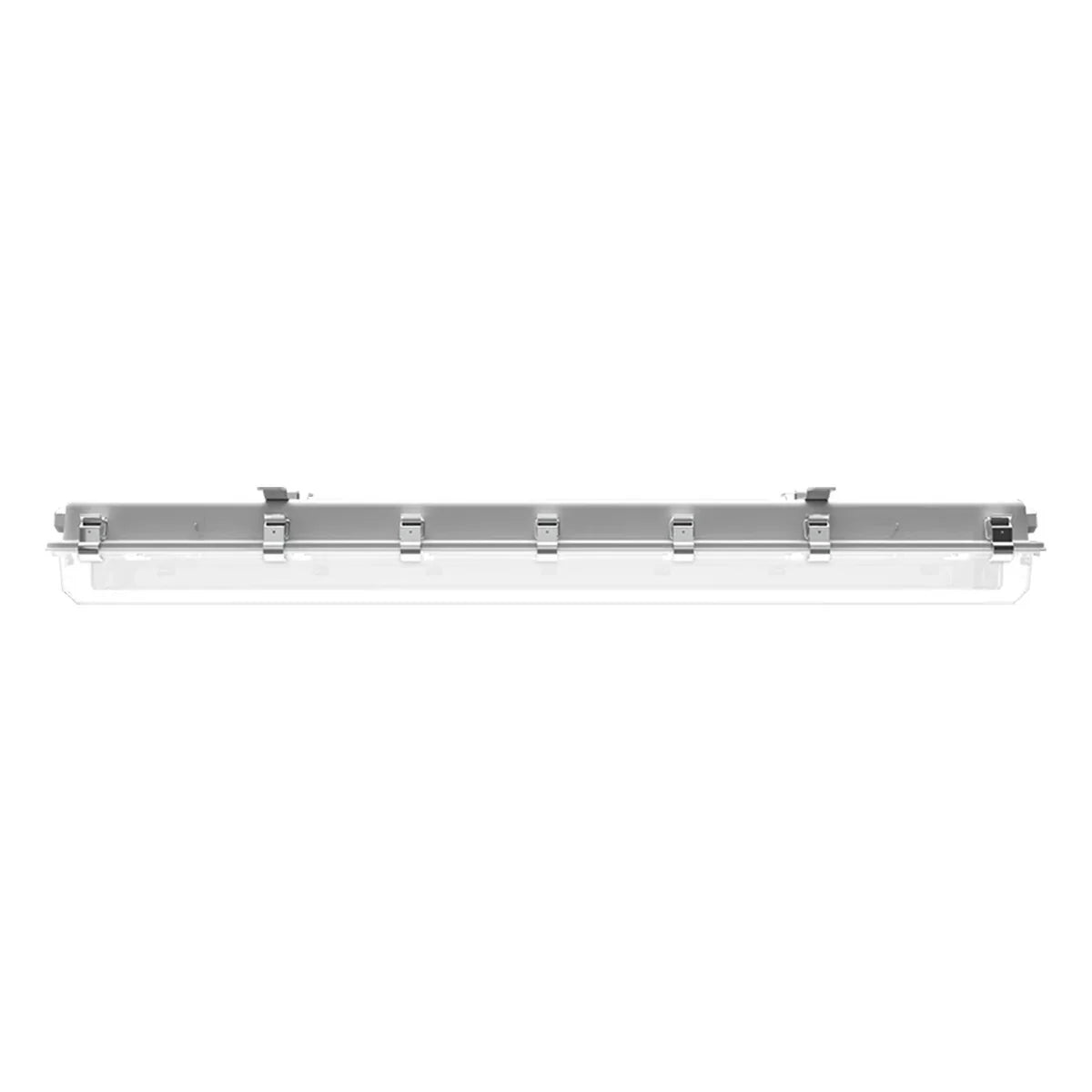Hazardous location lighting and explosion proof lighting refer to specialized luminaires meticulously designed and certified to operate safely in environments where flammable gases, vapors, combustible dusts, or ignitable fibers may be present, preventing the light fixture itself from becoming an ignition source. These critical explosion proof lights are engineered to contain any internal explosion, cool surface temperatures, and prevent sparks from escaping, ensuring the safety of personnel and property in classified hazardous areas.
Understanding Hazardous Locations and Their Classification
Hazardous locations are areas where flammable liquids, gases, vapors, combustible dusts, or ignitable fibers/flyings are present in quantities sufficient to create an explosive or ignitable mixture. These classified areas are not inherently dangerous, but the presence of these materials necessitates specific electrical equipment designed to operate without causing an ignition, including specialized hazardous area lighting.
Proper classification of these environments is paramount for several reasons:
- Preventing Explosions: The primary reason is to select the correct explosion proof lighting and electrical equipment that will not ignite the surrounding atmosphere, thereby preventing catastrophic explosions and fires.
- Safety Compliance: Regulatory bodies like the National Electrical Code (NEC) in North America and the International Electrotechnical Commission (IEC) globally, establish strict guidelines for identifying these locations. Proper classification ensures compliance with these critical safety standards for hazardous location lighting.
- Equipment Selection: The classification dictates the precise type and level of protection required for all electrical apparatus, including specialized hazardous area lighting and explosion proof lights. Mismatching equipment to a hazardous location can have severe consequences, including legal liabilities and loss of life.
- Cost Efficiency: While specialized lighting may have a higher upfront cost, accurately classifying areas prevents over-specifying equipment, which can be unnecessarily expensive, or under-specifying, which can be catastrophically dangerous.
- Worker Safety: Ultimately, proper classification safeguards workers by ensuring that all installed lighting and electrical systems, including explosion proof lights, are intrinsically safe for the specific hazardous materials present.
Understanding and accurately classifying these zones is the foundational step in designing safe and compliant hazardous area lighting solutions for any facility operating in a potentially explosive atmosphere.
NEC Classifications: Classes, Divisions, Groups, and Zones
In North America, the National Electrical Code (NEC), published by the National Fire Protection Association (NFPA), provides the definitive framework (NEC/NFPA 70) for classifying hazardous locations. This system guides the selection and installation of hazardous location lighting to ensure it's suitable for the specific risks involved.
The NEC classifies hazardous locations based on three key factors:
1. Classes (Type of Hazard):
- Class I: Locations where flammable gases or vapors are or may be present in the air in quantities sufficient to produce explosive or ignitable mixtures. (Hazardous area lighting for chemical plants, refineries).
- Class II: Locations hazardous because of the presence of combustible dust. This dust can ignite or explode when suspended in air in sufficient concentrations. (Explosion proof lights for grain elevators, flour mills).
- Class III: Locations hazardous due to the presence of easily ignitable fibers or flyings. These materials are not likely to be suspended in the air to form ignitable mixtures but can ignite and spread fire. (Hazardous location lighting for textile mills).
2. Divisions (Probability of Hazard Presence):
- Division 1: Indicates that the hazardous material (gas, vapor, dust, or fiber) is present under normal operating conditions, or exists frequently due to maintenance, repair, or equipment failure. This requires the highest level of explosion proof lighting.
- Division 2: Indicates that the hazardous material is not normally present, or exists only under abnormal conditions (e.g., accidental rupture of containers, equipment breakdown, or infrequent system failures). Suitable hazardous area lighting is still critical here.
3. Groups (Specific Material Characteristics):
-
Class I Groups (Gases/Vapors): Materials are grouped by their specific ignition properties, such as explosion pressure and minimum igniting current (MIC).
- Group A: Acetylene (most hazardous).
- Group B: Hydrogen, butadiene, ethylene oxide, propylene oxide, acrolein, and similar substances.
- Group C: Ethylene, cyclopropane, ethyl ether, and similar substances.
- Group D: Propane, gasoline, methane, benzene, butane, acetone, natural gas, and similar substances (most common for explosion proof lighting).
-
Class II Groups (Dusts): Materials are grouped by their ignitability and conductivity.
- Group E: Combustible metal dusts (e.g., aluminum, magnesium, titanium). Highly hazardous.
- Group F: Carbonaceous dusts (e.g., carbon black, charcoal, coal, coke dust).
- Group G: Non-conductive dusts (e.g., flour, grain, wood, plastics, chemicals).
4. Zones (Alternative, More Granular Classification for Class I and Class II Dusts):
The NEC also includes a Zone system (harmonized with IEC international standards), which offers a more granular classification, particularly for Class I locations (gases/vapors) and recently adopted for Class II (dusts) in newer NEC editions. This system helps specify hazardous location lighting even more precisely.
-
Class I, Gas/Vapor Zones:
- Zone 0: Ignitable concentrations are present continuously or for long periods. (Requires the most stringent explosion proof lights).
- Zone 1: Ignitable concentrations are likely to occur under normal operating conditions.
- Zone 2: Ignitable concentrations are not likely to occur in normal operation and, if they do, exist only for a short period.
-
Class II, Dust Zones:
- Zone 20: Ignitable concentrations of combustible dust are present continuously or for long periods.
- Zone 21: Ignitable concentrations of combustible dust are likely to occur under normal operating conditions.
- Zone 22: Ignitable concentrations of combustible dust are not likely to occur in normal operation and, if they do, exist only for a short period.
Properly identifying the Class, Division, Group, or Zone of a hazardous location is the fundamental step in selecting the appropriate explosion proof lighting and hazardous area lighting that meets stringent safety standards.
Choose Bees Lighting for Your Hazardous Area Illumination
Selecting the correct hazardous location lighting is a critical decision that directly impacts the safety and compliance of your facility. At Bees Lighting, we understand the complexities of NEC classifications and the absolute necessity of reliable, certified explosion proof lighting. We offer a comprehensive range of hazardous area lighting solutions and explosion proof lights specifically designed and tested to meet the most stringent Class, Division, Group, and Zone requirements.
Trust Bees Lighting for:
- Certified Compliance: Our products are sourced from leading manufacturers, ensuring they meet rigorous UL standards and other applicable standards for hazardous location lighting.
- Expert Guidance: We provide the resources and support to help you understand your specific needs and select the appropriate hazardous area lighting for your classified areas.
- Uncompromised Safety: Our commitment is to provide explosion proof lights that prevent ignition, protect assets, and ensure the well-being of your personnel.
- Durability & Performance: Even in extreme environments, our explosion proof lighting delivers long-lasting, energy-efficient performance.
Don't compromise on safety. Illuminate your hazardous environment with confidence. Explore Bees Lighting's specialized collection of explosion proof lighting and hazardous location lighting today.
Frequently Asked Questions
What locations require the use of explosion-proof lighting?
What locations require the use of explosion-proof lighting?
What standard governs explosion-proof lighting?
What standard governs explosion-proof lighting?
Why is it necessary for lights to be explosion-proof?
Why is it necessary for lights to be explosion-proof?
How do explosion-proof and hazardous location classifications differ?
How do explosion-proof and hazardous location classifications differ?
What materials are explosion proof?
What materials are explosion proof?


























